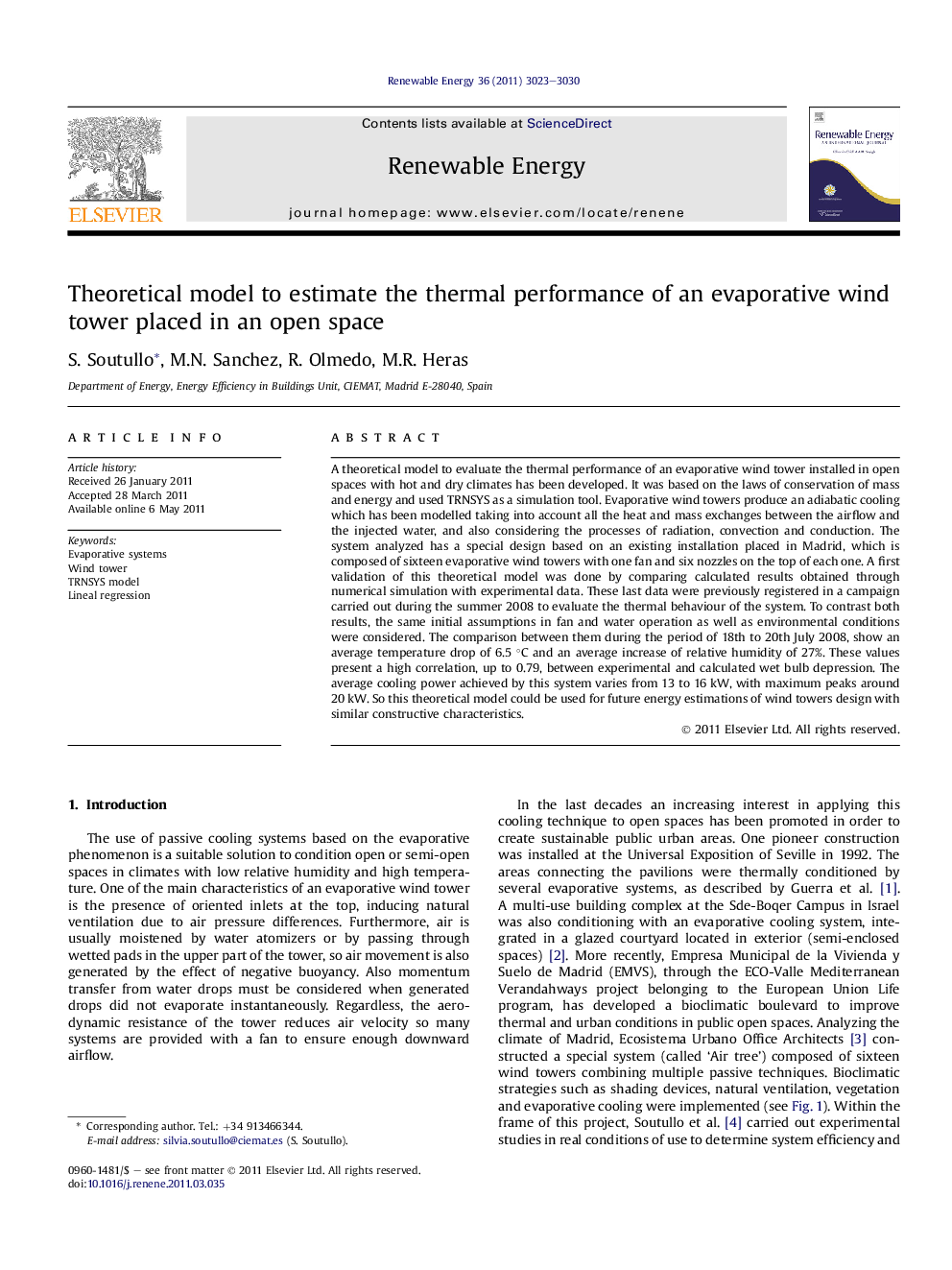| Article ID | Journal | Published Year | Pages | File Type |
|---|---|---|---|---|
| 301342 | Renewable Energy | 2011 | 8 Pages |
A theoretical model to evaluate the thermal performance of an evaporative wind tower installed in open spaces with hot and dry climates has been developed. It was based on the laws of conservation of mass and energy and used TRNSYS as a simulation tool. Evaporative wind towers produce an adiabatic cooling which has been modelled taking into account all the heat and mass exchanges between the airflow and the injected water, and also considering the processes of radiation, convection and conduction. The system analyzed has a special design based on an existing installation placed in Madrid, which is composed of sixteen evaporative wind towers with one fan and six nozzles on the top of each one. A first validation of this theoretical model was done by comparing calculated results obtained through numerical simulation with experimental data. These last data were previously registered in a campaign carried out during the summer 2008 to evaluate the thermal behaviour of the system. To contrast both results, the same initial assumptions in fan and water operation as well as environmental conditions were considered. The comparison between them during the period of 18th to 20th July 2008, show an average temperature drop of 6.5 °C and an average increase of relative humidity of 27%. These values present a high correlation, up to 0.79, between experimental and calculated wet bulb depression. The average cooling power achieved by this system varies from 13 to 16 kW, with maximum peaks around 20 kW. So this theoretical model could be used for future energy estimations of wind towers design with similar constructive characteristics.
► A TRNSYS new model for an evaporative wind tower in open spaces has been developed. ► Fan-assisted and cylindrical cross section towers. ► The water and airflow were estimated as an average of experimental data. ► Model validation with equations of lineal regression. ► High statistical correlation between simulated and measured wet bulb depression.
